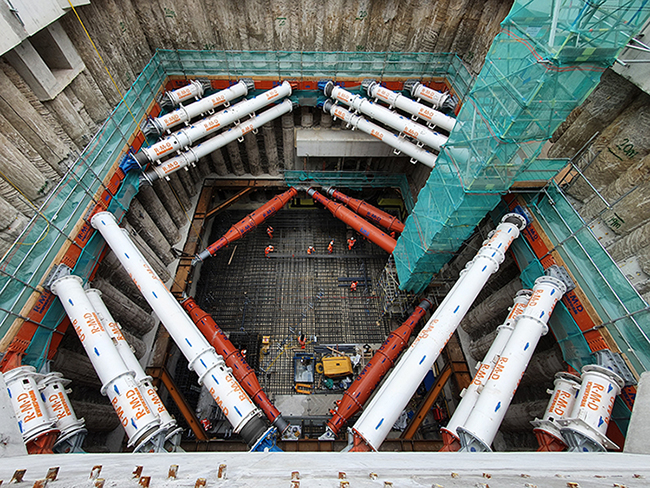
Ajay Nagah, engineering & major projects manager – ground shoring, at Altrad RMD Kwikform, explains how the use of historic data and digital virtual reality (VR) models can facilitate a more rationalised thermal load design approach to ground shoring, leading to a leaner temporary propping solution.
AT a time where the geometry and depths of excavations are becoming more complex and onerous, the design of temporary propping has also evolved; with the criteria for civils projects dictating that full thermal actions (ambient and solar) be considered thus presenting a bigger challenge – especially when thermal loading can be equal to or greater than the geotechnical design loads.
Coupled with the fact that temporary ground works suppliers usually get involved in the latter stages of a project, it means they are often tasked to produce complex design solutions within a short timeframe, which often results with suppliers working to the load criteria presented by the consultant and present a standard design of temporary propping – thus not always the most valued, efficient solution.
However, with the help of recorded load monitoring data, significant savings in prop size and quantity could be achieved if some ‘realism’ is applied to the thermal load criteria, which is derived from Eurocodes centred around permanent steel structures in above ground applications.
For insight into actual prop loads, Altrad RMDK’s high-capacity load cells, ‘E-Pins’, provide real-time load results whilst eliminating the need for traditional strain gauges, which can add further complexity with set-up, maintenance, and axial load determination for propping applications.
Monitoring projects not only assists with actual load results for live schemes, but also offer valuable insight for future projects.
For example, data from previously monitored projects in a particular region and/or at a similar time of year can be used to evaluate, more accurately, how a new project in nearby location or at similar time will behave in terms of geotechnical and thermal load performance.
The data collated from historic projects from UK and abroad highlighted a few key points:
• Actual loads are usually far less than design loads
• Top level props behave similar to standard design approach (direct exposure to sunlight)
• Thermal load reduces as depth of excavation increases (shading effect)
The use of VR also assisted when deciphering the thermal ranges for multi-level propping in deep excavations. 3D models of the excavation supports were geographically mapped to the site location with the flight path of the sun modelled to accurately assess how much sunlight would be cast over the props at various times of the day and year.
Via the use of all the above tools and knowledge, Altrad RMDK were able to rationalise the thermal load design range for the lower-level props within deep excavations.
On a recent high-profile project, this approach allowed Altrad RMDK to work to around 70% of the initial design loads, enabling circa 30% less steel to be used in the excavation compared to the original design.
This way of working offers the benefits of smaller and/or less props, more working room, less time to install and remove props, reduced transport, and CO2, offering a reduction in overall project costs.
For temporary ground works providers, going above and beyond to give customers the best possible solutions is a key differentiator, proving that leaner, smarter solutions can be achieved by collaborating and sharing data and experience from past projects.
Ultimately, we always push for excellence despite any challenges that may exist, and have confidence in our approach that big thinking can lead to big results.
We have also developed a new product that could almost eliminate variable/thermal loading completely – watch this space!









